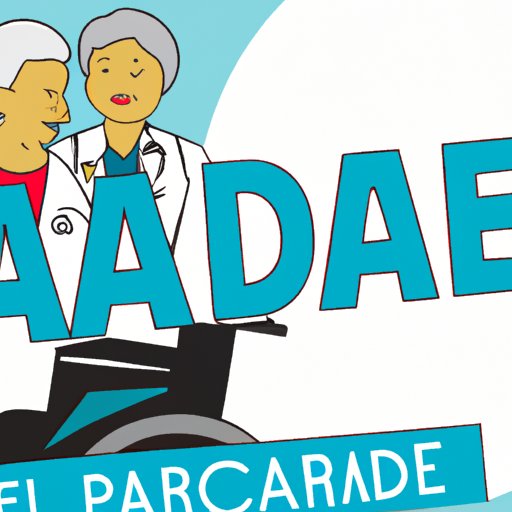Overview of Medicare Part A: What Does it Pay For?
Medicare Part A is a federal program designed to provide healthcare coverage for people 65 years or older. This program covers inpatient hospital stays, skilled nursing facility care, hospice care, and home health care. In this guide, we’ll explore the benefits and coverage of Medicare Part A, as well as the cost and eligibility requirements.

Exploring the Benefits and Coverage of Medicare Part A
Medicare Part A offers coverage for a variety of medical services. Here’s a closer look at the types of care covered by Medicare Part A.
Inpatient Hospital Care
Medicare Part A helps pay for inpatient hospital care when you are admitted as an inpatient. This includes care received in a hospital, critical access hospital, inpatient rehabilitation facility, and long-term care hospital. Medicare Part A will cover the costs of room, board, and medically necessary services received while in the hospital.
Skilled Nursing Facility Care
Medicare Part A covers a portion of the costs associated with skilled nursing facility care. This type of care is provided in a nursing home and must be ordered by a doctor. Medicare Part A will cover a limited number of days in a skilled nursing facility in certain situations.
Hospice Care
Hospice care is designed for individuals who are terminally ill and have a life expectancy of six months or less. Medicare Part A covers the cost of hospice care, including medications and medical equipment related to the terminal illness, counseling, and other support services.
Home Health Care
Medicare Part A also covers the cost of certain home health care services. These services include nursing care, physical therapy, occupational therapy, speech-language pathology services, and medical social services.

Exploring the Cost and Eligibility Requirements for Medicare Part A
Who is eligible for Medicare Part A?
Most people who are 65 years or older are eligible for Medicare Part A. You may also be eligible if you are under 65 but have a disability or end-stage renal disease. People who are eligible for Medicare Part A usually don’t have to pay a premium for this coverage.
How much does Medicare Part A cost?
If you are eligible for Medicare Part A, you usually don’t have to pay a premium. However, you may have to pay a deductible and coinsurance for certain services. The amount of your deductible and coinsurance payments depends on the services you receive.
Understanding What Medicare Part A Covers and What it Doesn’t
What services are covered by Medicare Part A?
Medicare Part A covers inpatient hospital care, skilled nursing facility care, hospice care, and home health care. It also covers some preventive services, such as flu shots and screenings for colorectal cancer.
What services are not covered by Medicare Part A?
Medicare Part A does not cover most prescription drugs, dental care, vision care, hearing aids, or long-term care. It also does not cover services that are not medically necessary, such as cosmetic surgery.
How to Maximize Your Medicare Part A Coverage
To get the most out of your Medicare Part A coverage, consider taking the following steps:
Review your Medicare Summary Notice
Your Medicare Summary Notice (MSN) is sent to you every three months and outlines the services you received and the amount you paid. Reviewing this document can help you identify any errors or discrepancies in your coverage.
Consider enrolling in a Medicare Advantage plan
A Medicare Advantage plan is a private insurance plan that offers additional coverage beyond what Medicare Part A provides. These plans often include coverage for prescription drugs, vision care, and other services that are not covered by Medicare Part A.
Take advantage of preventative care services
Medicare Part A covers many preventative care services, such as screenings for colorectal cancer and flu shots. Taking advantage of these services can help you stay healthy and avoid costly medical bills in the future.
Understand what services you need and don’t need
Not all medical services are necessary. Before undergoing any type of medical procedure, make sure you understand what services are covered by Medicare Part A and which ones you may have to pay for out of pocket.
Explore supplemental insurance options
Supplemental insurance can help cover the cost of services not covered by Medicare Part A. Many employers offer supplemental insurance plans, so check with your HR department to see if your employer offers one.
Contact your local Social Security office for more information
Your local Social Security office can provide more information about Medicare Part A and answer any questions you may have. They can also help you determine if you are eligible for Medicare Part A and explain the cost and coverage details.
By understanding what Medicare Part A covers and exploring the cost and eligibility requirements, you can ensure that you are getting the most out of your coverage. With the right information and resources, you can maximize your Medicare Part A coverage and save money in the process.
(Note: Is this article not meeting your expectations? Do you have knowledge or insights to share? Unlock new opportunities and expand your reach by joining our authors team. Click Registration to join us and share your expertise with our readers.)
